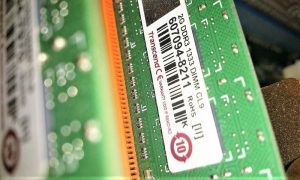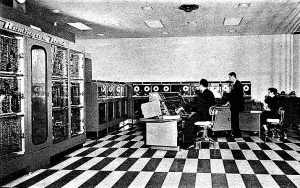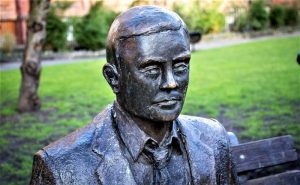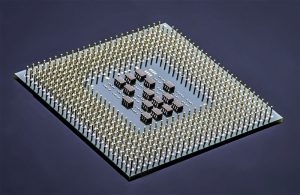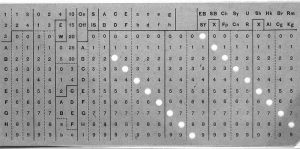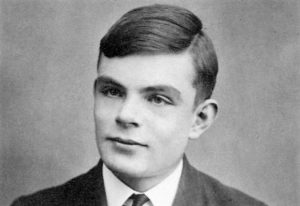Herman Hollerith
The world of informatics, as we know it today, was born thanks to the contributions of Herman Hollerith, an American inventor who developed the first electromagnetic tabulator machine used in its beginnings to collect information for the 1890 census.
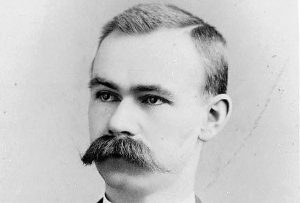
Personal Information
- When was he born? 29/02/1860
- When did he die? 17/11/1929.
- Nationality: American
- What's he famous for? For inventing the electromagnetic tabulation machine
Who was Herman Hollerith?
Herman Hollerith was the American inventor who created the first electromagnetic punch card tabulating machine for data processing. This creation marks the origin of the semi-automatic era of information processing. The main use of its artifact was to summarize information and it was then used in accounting. He is the founder of the Informatica Tabulating Recording Company, a company that years later would take the name of International Business Machines (IBM). In the world of technology, he is known as the first computer scientist because he knew how to handle information automatically for the first time with his great invention. In addition to his contributions to computer science, he was a main pillar in the construction of the first computer.
It is considered by many as the creator of the first computer and who gives value to the origin of the word informatics since it constitutes the fusion of information and automatic.
Thanks to Herman Hollerith is created in 1924, one of the best known computer companies in the world, IBM (International Business Machine), which sells computers of all kinds anywhere in the world.
Biography of Herman Hollerith
Herman Hollerith was born in Buffalo, New York, on February 29, 1860.
As a child, he had speech problems because his pronunciation was not fluent. As a result, he was assigned a tutor for his studies. However, he was always distinguished by his intelligence and for this reason he entered Columbia University in 1875, where he studied mining engineering and graduated with honors.
In 1882 Herman worked as a mechanical engineering professor at the Massachusetts Institute of Technology. He then moved to Missouri, where he began designing electric trains. From 1884 to 1890, he worked in the U.S. Patent Office in Washington.
When studying the census questions, Herman Hollerith realizes that all the questions are closed-ended “yes” or “no” questions. This led Herman to create an 80-column cardboard card, on which the questions could be answered with perforations in certain positions. The machine created by Hollerith was considered by many to be the first computer and was used by the U.S. Government for the 1890 census. Punching 56 million cards took 3 years.
The tabulating machine was patented in 1889 by Herman Hollerith. In 1890, the machine had a summing operation which allowed it to be used in the Central Railroads of New York accounting.
Six years later, in 1896, he created the Tabulating Machine Company to publicize his invention. Years later, Herman’s company joins with Computing Scale Company, International Time Recording Company and Bundy Manufacturing Company to create Computing Tabulating Recording Corporation, a company that will change its name in 1924 to International Business Machines Corporation (IBM).
Herman Hollerith dies at age 69 from a heart attack on November 17, 1929, in Washington D.C.
Inventions by Herman Hollerith
Herman Hollerith was the first to use paper tape to encode the data. This tape consisted of fields marked with ink, in which data could be encoded, perforating it or not, depending on the data to be recorded.
The use of punched cards was first used by J. Jacquard in 1902 in order to control the operation of the looms mechanically. But Hollerith was the one who used them to work the information and for computer science, using electromechanical tools.
This first invention of Herman Hollerith evolved to the perforated card, a system to compute data that was patented in 1889.
These cards were used by Hollerith in his tabulating machine – the inventor’s second best-known invention – to process data from the 1890 U.S. Census, which processed the data of 60 million Americans over a period of three years.
The tabulating machine could analyze the contents of 300 cards per minute, and considerably reduce data analysis.
After the success of the tabulating machine in the 1890 census, Herman Hollerith oriented his invention to commercial purposes, adapting it to work in commercial areas.
Contributions of Herman Hollerith
The contributions generated by Herman Hollerith’s inventions were very representative for the area of information technology worldwide. Not only because of his inventions or the foundation of the world’s best known computer company, IBM, but also because of the scope in the different disciplines where computing represents an indispensable tool for the processing and storage of information.
Hollerith is one of the pioneers, from a punched card, of the computing that we know today and that is why he is known by many in the world of technology, as the father of computing.
How to cite this article?
Briceño V., Gabriela. (2019). Herman Hollerith. Recovered on 4 January, 2025, de Euston96: https://www.euston96.com/en/herman-hollerith-en/



